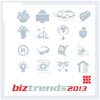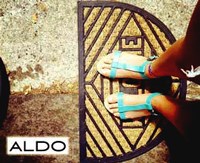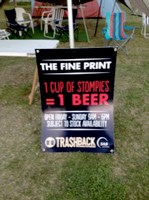[2013 trends] The year ahead for experiential marketing
![[2013 trends] The year ahead for experiential marketing](https://biz-file.com/c/1301/123004.jpg)
Before we do so, it would be wise to see how history might repeat itself.
Reflecting briefly, for experiential marketing, 2012 was quite a year locally and abroad.
Globally, consumers pushed buttons for drama (TNT Belgium campaign) and stood underneath giant soda fountains to cool off (Sprite beach activations)
Closer to home, Stimorol Infinity [disclaimer: a Stretch production] looked to break the world record for mass spooning, and a certain beer brand allowed all us to try our hand at managing a soccer team in real life.
How did we hear about this? Well, we tweeted, posted, uploaded, downloaded and hipstergrammed the hell out of them.
Digital diesel
With the social movement set to gain further momentum among millenials, we can expect digital diesel to continue to power brands' experiential engines. What we will see in 2013 is an ever-increasing interdependence between these two media.
As Mike Sharman (@MikeSharman) from Retroviral suggests, "If an activation takes place in the woods and no one is around to witness it, did it aid your client's marketing efforts? Of course not. It is imperative that marketers focus on strategy first that supports business objectives and then on tactics that amplify talkability."
Digital conversations rely largely on experiential content and vice versa.
- Social media amplification
- Fungineering
- Machine interactions
- SoLoMo
- Cause-related experiences
- B2B and employee/internal communications
- Sponsorship activation evolution
- Blurring the line
Lastly, on a macro level, we should see the so-called line between ATL/BTL continue to blur, with brand experiences leading through-the-line campaigns more frequently. Expect some inter-agency bloody noses in the process!
Let's just get the obvious out the way first. The rise of digital has, for the first time, provided experiential marketing with undisputed measurement tools that even four-eyed bean counters have to appreciate.
Quality vs quantity is crucial! Keeping it relevant and beneficial to consumers' lives will be crucial as the frequency of digital messaging continues rising. Ben & Jerry's "Scoop Truck" campaign gave Americans a reason to follow the brand, with creamy samples distributed from locations broadcast live via their Twitter handle.
The opportunity to transform everyday spaces and objects into experiential playgrounds will continue in 2013. These unexpected chance encounters will play on the 'FOMO' (fear of missing out) concept, with the opportunity to be present at a future viral stunt deemed aspirational.
Stretch's "Lipton Ice Sea" campaign did just this, with allegedly the world's first floating vending machine rocking up unexpectedly on South Africa's national beaches at the end of 2012 to help consumers 'Never lose their cool'.
As consumers' digital and real world lives converge, brands will continue to use familiar (and sometimes mundane technology) to deliver unexpected fun. Everyone from soft drinks to automobile brands will look to get in the mix.
"Kenneth the Talking Vending Machine" played on the everyday coffee-ordering ritual by reversing roles and bossing consumers about for a free cup.
What? Social Local Mobile, of course. Relying on mobile connectivity, consumers will engage with brands via social media in relation to a specific personal location.
Aldo's photo-sharing campaign in Israel saw welcome mats placed in strategic spots across the country. Consumers were then delivered shoes within two minutes to their location, as long as they uploaded on Instagram with the #aldo call to action. Genius!
Millenials are showing they actually give a damn about their community and environment, more so at least than the previous generation. The opportunity to 'do good' while leveraging off 'shareworthy' experiences will see more brands jump on the CSI bandwagon.
The recent litter awareness campaign by social enterprise Trashback saw festival-goers receive free beer in exchange for a cup of used cigarette butts (stompies).
We can expect experiential to make inroads into these spaces. The crusty sandwich and Comic Sans canteen poster simply won't suffice any more. Employees and customers are consumers in their own right and, as such, will become more receptive to experiential communication.
A recent European study by Havas Sports Media found that two thirds of festival-goers believe that 'brands improve a festival experience'. In short, consumers care little for logos but rather for brands tapping into attendee experience insights and adding value in the process.
At last year's edition of the Plett Rage music festival, adidas Originals tasked Stretch with ensuring it gained access into the hearts and minds (and ears!) of over 10 000 students. With smartphone access non-existent due to strained networks, #OriginalsFM ensured students would stave off FOMO with the festival's first-ever radio station keeping them in the loop. Content included gig guides, interviews with DJs and live beach broadcasts.
Listenership was ensured through the distribution of 700 pre-tuned retro radios and vehicle door hangers with a 'listen live' call to action. In so doing, Originals tapped into the consumer need for access to festival info, irrespective of their location.
So that's it for experiential marketing predictions for the year. Here's to an awesome 2013 experience!

- Bizcommunity Download: 2013 Biz Trends Report (pdf: 3MB)
- Bizcommunity Special Section: Biz Trends 2013
- Bizcommunity Search: 2013 trends
- Bizcommunity: Biz Trends 2013 twitterfall
- Twitter Search: #biztrends2013











![[2013 trends] The year ahead for experiential marketing](https://biz-file.com/c/1301/123010.jpg)
![[2013 trends] The year ahead for experiential marketing](https://biz-file.com/c/1301/123016.jpg)
































